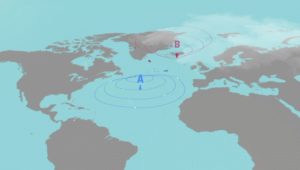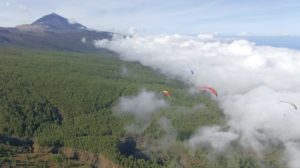Discover the Unique Microclimates of the Canary Islands
The Canary Islands rise dramatically from the seabed as stunning columns of volcanic rock, reaching heights of nearly 4,000 meters, all within close proximity to one another. Despite their closeness, each island is a unique microworld, showcasing diverse ecosystems and landscapes.
Exceptional Weather Conditions
Due to their geographic location, varied morphology, and significant elevation relative to the sea, the islands boast extraordinary weather conditions. Each island not only differs from the others but also experiences a remarkable range of weather patterns influenced by its topography and altitude. Consequently, the Canary Islands are often described as having multiple microclimates rather than a single, uniform climate.
Ideal Destination for Paragliding
This variety makes the islands an ideal destination for understanding the diverse meteorological factors essential for safe free flight practices. With a high number of flyable days throughout the year, the Canary Islands provide the perfect environment for aspiring paraglider pilots to learn, improve their skills, and gain valuable knowledge.
Known as «The Flying Islands,» the Canary Islands offer a spectacular playground for paragliding enthusiasts. The stunning landscapes, including volcanic peaks, dramatic cliffs, and lush valleys, create an exhilarating backdrop for your flight. Each island presents unique challenges and breathtaking views, making it an attractive destination for pilots of all experience levels.
The most popular locations for paragliding include Mount Teide on Tenerife, which offers incredible views of the island and beyond, and the cliffs of La Palma, where you can soar high above the Atlantic Ocean. With reliable winds and varied terrain, these islands are perfect for both beginner and experienced pilots. In addition to paragliding, visitors can explore hiking trails, enjoy local cuisine, and immerse themselves in the vibrant culture of the Canary Islands, making it a comprehensive outdoor adventure destination. At the moment it seem like Giles is the area for paragliding where more flights are taken per year. If you are interested in a Tandem Flight in Los Giles follow link.
 Azores Anticyclone and its position in the Atlantic Ocean
Azores Anticyclone and its position in the Atlantic Ocean
Conclusion
In summary, the Canary Islands provide an exceptional setting for paragliding enthusiasts, blending breathtaking landscapes with diverse climatic conditions, making it a premier destination for both learning and exploration.


